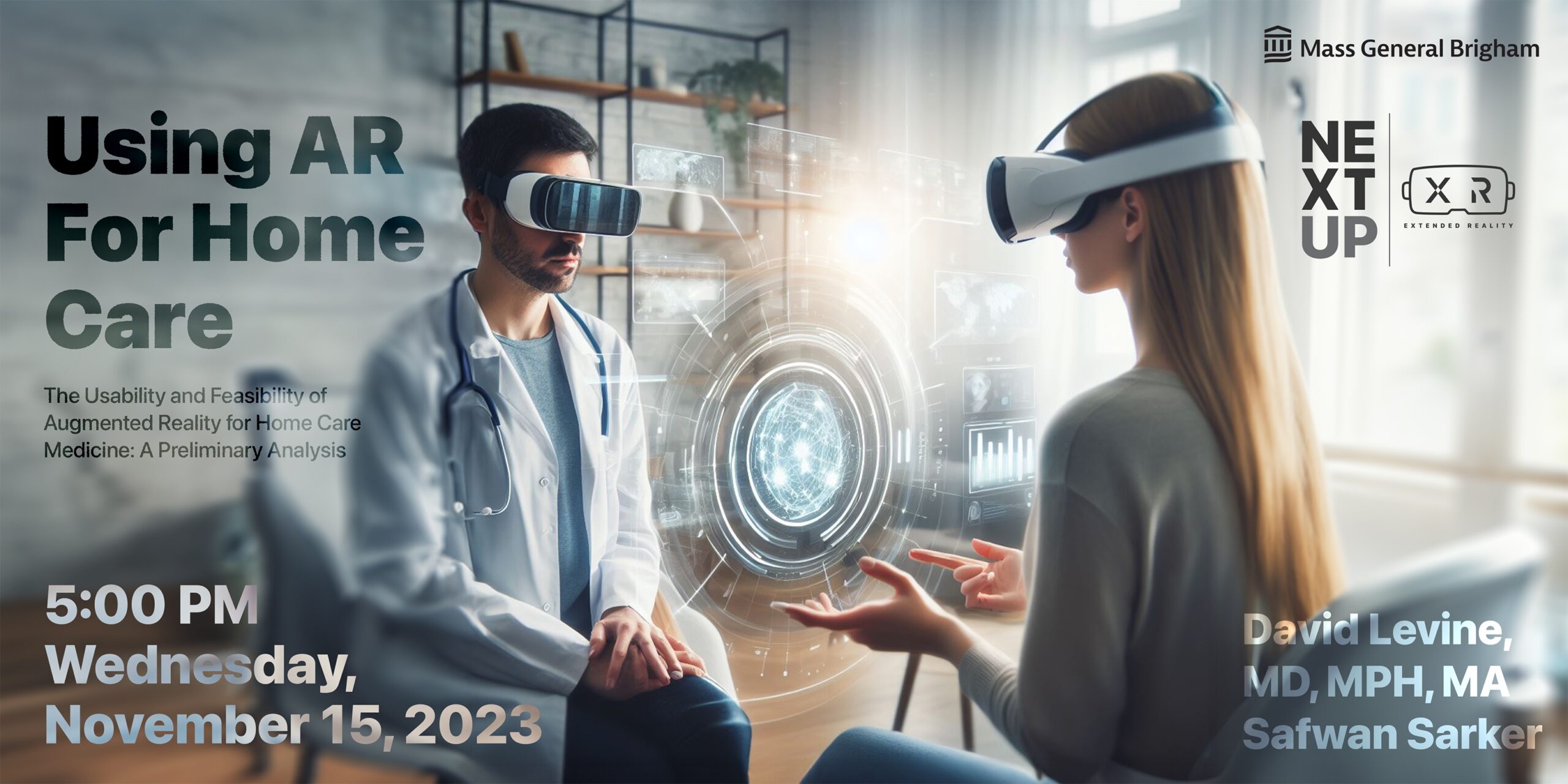How could immersive technology help improve patient experience with care delivery at home? The November NextUp: XR Network event featured two researchers working to study this question. Dr. David Levine, Clinical Director of Research & Development of Healthcare at Home at Mass General Brigham, and Safwan Sarker from the Mass General Brigham Home Hospital program presented a preliminary analysis of their research integrating augmented reality (AR) into the workflow of home-based care. They showed the feasibility and usability of integrating AR technology with individuals receiving care at home.
Using AR for home care
Home care medicine enables the delivery of critical services in patients’ homes, who otherwise would not receive the care they need. But the program itself is hard to scale given requirements for resources such as staffing, technology, and patient engagement.
The research team decided to inquire whether leveraging AR technology could alleviate some of the current barriers to expanding home care and provide for a better patient experience. Levine and Sarker leveraged the Microsoft HoloLens 2, which traditionally has been an enterprise product built for non-healthcare settings. But could the headset also work to deliver care and make the patient experience better and more personal?
Early results show successful AR task completion and positive user experience
The study recruited older community-dwelling adults with recent hospitalization or significant medical comorbidities. Using the AR headset and its accompanying software, Levine and Sarker created holographic tasks that were designed to resemble routine checks and equipment usage frequently encountered when receiving home care. During the two-hour visit, participants used the HoloLens 2 device in their home to complete tasks. Participants then completed qualitative and quantitative questionnaires to assess the intervention. Despite no prior experience with AR technology, all participants adeptly used the headset with minimal training to complete the experiment’s tasks. While more evaluation is still needed, the findings thus far offer an exciting glimpse at the opportunity AR presents to further scale the home care model.
Continuing the discussion
During the NextUp: XR event, the presentation by Levine and Sarker sparked further conversations, including what future headsets and improvements in AR technology could do for home care patients. Opportunities are bountiful to leverage AR, and in general, extended reality (XR) technologies, for care at home. Especially as this segment of healthcare grows rapidly, digital technology will have a tremendous impact to the delivery and cost of care.
We invite you to continue the discussion on our NextUp: XR Teams channel and at our future events. Visit our website to learn more about the NextUp: XR initiative, projects, and upcoming programming.

